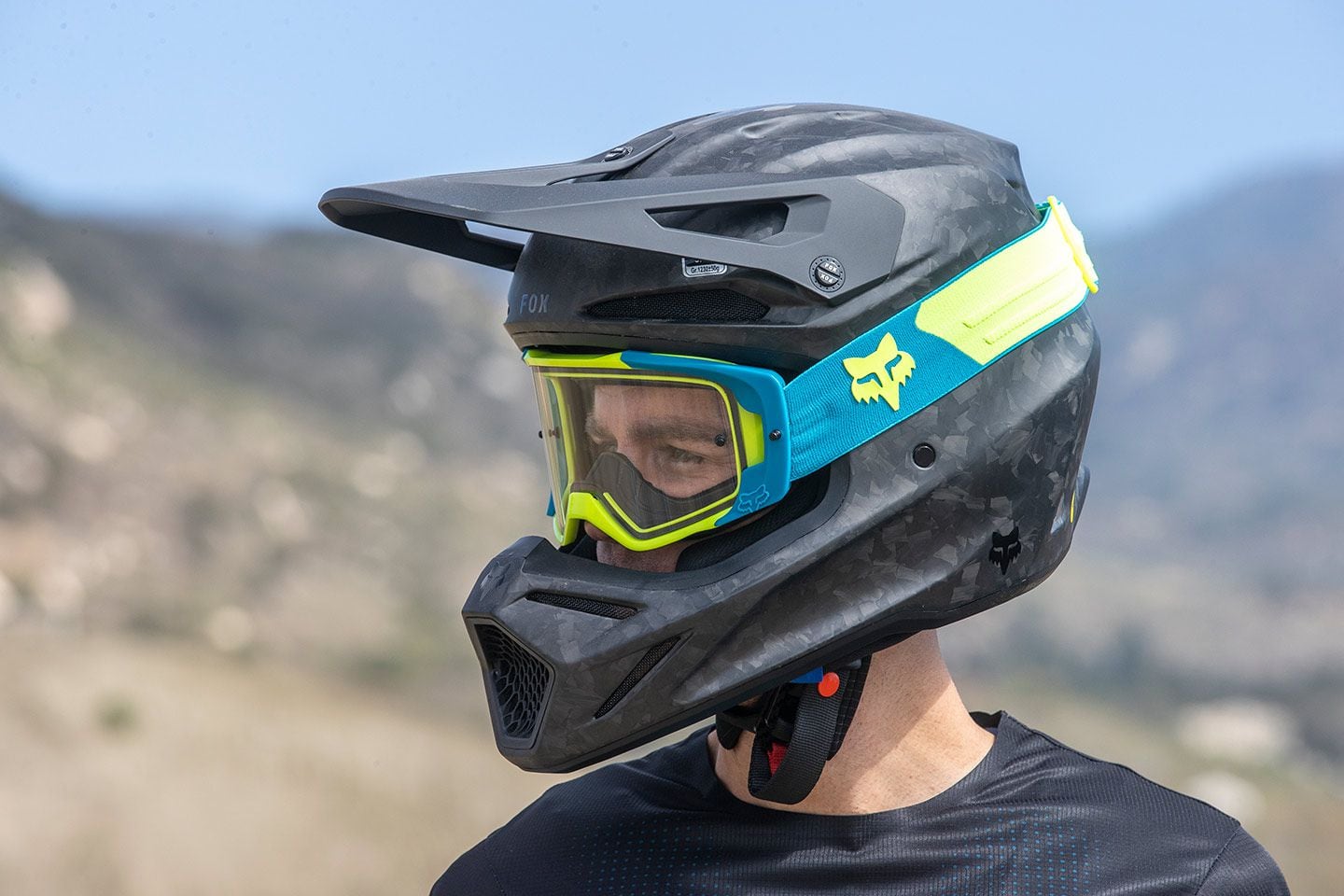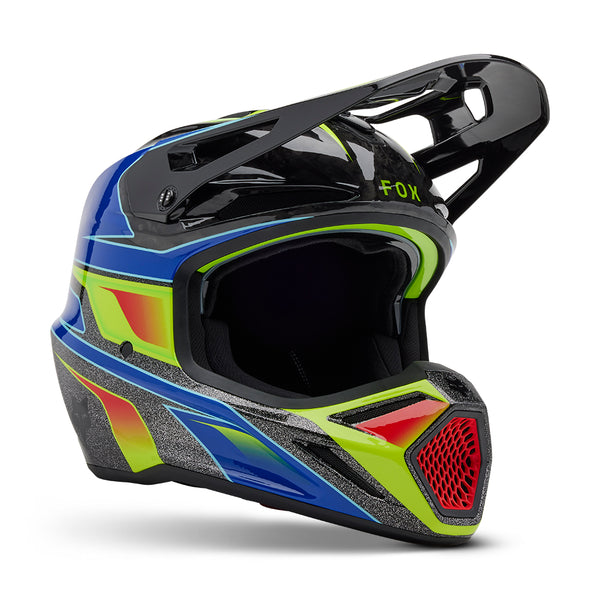Explore the most effective Dirt Bike Helmets NZ: Security and Design Combined
Explore the most effective Dirt Bike Helmets NZ: Security and Design Combined
Blog Article
Your Guide to Selecting a Light-weight and Durable Motocross Safety helmet
Selecting the appropriate motocross safety helmet is an important decision that stabilizes efficiency, security, and convenience. As we check out the complexities of safety helmet selection, you might discover that the right combination of functions can not just raise your safety yet additionally transform your time on the track.
Value of Safety Helmet Weight
The weight of a motocross headgear plays a vital role in both motorcyclist comfort and performance. A lighter headgear can considerably boost a biker's experience, lessening fatigue during lengthy rides or races. When the safety helmet is exceedingly heavy, it can cause neck pressure and pain, which may interfere with the cyclist's focus and general control. Choosing a light-weight headgear is important for preserving ideal performance on the track (arai helmets nz).
Along with convenience, the weight of the safety helmet can affect aerodynamics. A lighter helmet decreases wind resistance, enabling bikers to navigate a lot more effectively at high rates. This aspect ends up being increasingly crucial in affordable setups where every second counts. Additionally, lightweight products used in safety helmet building, such as advanced compounds and polycarbonate blends, commonly use premium defense without compromising convenience.
It is additionally worth keeping in mind that the balance of the headgear plays a critical duty in overall stability. A well-balanced headgear distributes weight equally, improving the rider's capability to maintain a low center of mass and execute doglegs. In summary, helmet weight is a crucial consideration for motocross motorcyclists, impacting both comfort and performance on the track.
Trick Safety Functions
Considering that the primary purpose of a motocross helmet is to safeguard the rider, recognizing key safety functions is vital for making an enlightened option. One of one of the most critical elements of headgear safety is the effect absorption capacity, which is commonly achieved with a broadened polystyrene (EPS) foam liner. This foam presses upon influence, decreasing the pressure transmitted to the head.
One more crucial security function is the helmet's retention system, that includes the chin strap and clasp. A safe retention system ensures that the helmet stays in position during a collision, significantly boosting protection. In addition, lots of safety helmets come geared up with MIPS (Multi-directional Impact Defense System) technology, created to minimize rotational forces during tilted effects, thereby lessening the danger of brain injuries.
Ventilation is also a safety and security factor to consider; while it mostly deals with convenience, correct airflow can stop heat-related tiredness, which can hinder a biker's efficiency and response time. Ensure that the helmet fulfills safety and security accreditations like DOT, ECE, or Snell, as these requirements indicate that the helmet has undertaken strenuous screening to guarantee its protective abilities. Prioritizing these key safety and security attributes can improve your riding experience while guarding your health.
Products and Building And Construction
Selecting a motocross headgear includes not just thinking about safety attributes but also comprehending the materials and building that contribute to total efficiency and security. The main product used in headgear building is polycarbonate or fiberglass, both of which use a beneficial balance in between weight and longevity. Polycarbonate safety helmets helpful site are commonly lighter and extra economical, while fiberglass alternatives give boosted stamina and impact resistance.
The covering building and construction plays an essential duty in power dispersion throughout effects. Multi-layer styles, commonly using a combination of products, can efficiently soak up and dissipate pressures, minimizing the risk of head injuries. Some high-end versions incorporate carbon fiber, which dramatically minimizes weight without jeopardizing structural integrity.
Internally, the headgear's lining is commonly made from expanded polystyrene (EPS), which is designed to soak up shock. Modern helmets may include multiple density EPS, optimizing power absorption across a variety of impact situations. In addition, advanced ventilation systems are integrated right into the design to boost air flow, keeping the motorcyclist cool during extreme rides.

Fit and Comfort
Attaining the right fit is important for a motocross helmet, as it straight influences both security and comfort throughout adventures. A well-fitted helmet minimizes movement and reduces the danger of injury in the occasion of a crash.
When attempting on a headgear, it is necessary to check for a snug yet comfortable feeling. The helmet should not produce pressure points, but it should additionally not be loose adequate to move throughout motion.
Ventilation is another essential element of fit and convenience. Appropriate air movement can significantly boost motorcyclist experience by lowering warm accumulation. Eventually, spending time in discovering the ideal size and fit will certainly add to a safer, a lot more enjoyable motocross experience.

Budget Plan Factors To Consider
When acquiring a motocross helmet, bikers should thoroughly examine their spending plan to ensure they discover a high quality product that satisfies safety standards without spending too much. Setting a budget is necessary, as rates for headgears can vary considerably based on features, materials, and brand reputation.
On the reduced end, helmets might start around $100; however, riders need to be mindful, as these models might jeopardize on safety and security or comfort. Mid-range helmets, usually valued between $200 and $400, typically offer an equilibrium of resilience, comfort, and progressed security functions, making them a preferred choice among severe cyclists.
Premium safety helmets, priced over $400, typically incorporate advanced products such as carbon fiber and considerable air flow systems, offering superior protection and comfort. While buying a high-end headgear can enhance the riding experience, it is vital to guarantee that the additional attributes line up with individual riding needs.

Conclusion
In summary, selecting a sturdy and light-weight motocross safety helmet is vital for ensuring cyclist safety and security additional hints and comfort. The importance of safety helmet weight, incorporated with essential security features such as EPS foam linings and MIPS technology, can not be overemphasized.
Selecting the appropriate motocross helmet is a vital decision that balances comfort, security, and efficiency.Since the main function of a motocross safety helmet is to shield the rider, understanding key safety and security attributes is necessary for making an educated choice. Ensure that the headgear satisfies safety qualifications like DOT, ECE, or Snell, as these standards indicate that the safety helmet has undergone strenuous screening to ensure its safety capabilities.Achieving the ideal fit is critical for a motocross helmet, as it directly influences both safety and convenience throughout adventures.In recap, picking a sturdy and lightweight motocross safety helmet is crucial for making certain rider security and convenience.
Report this page